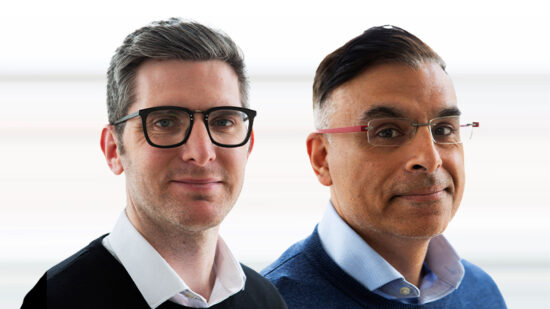Over the last few years the benefits of a 60/40 portfolio has been called into question, with neither equities nor bonds providing investors with the safety net of adequate diversification.
At a time when markets have been buffeting due to inflation, triggering rising bond yields and an uptick in the risk-free rate, some investors have been turning to alternative asset classes including hedge funds, commercial property and infrastructure to provide them to smooth returns and reduce market sensitivity.
Some investors warn against alternative assets accounting for a majority of a portfolio, given their complexity and – often – higher costs. But should investors who have traditionally stuck with the 60/40 split embrace the diversification that alternatives can bring?
Andrew Hardy, head of investment management at Momentum Global Investment Management (MGIM), points out that if done correctly, portfolio diversification can give investors with the ‘free lunch’ of steady and competitive returns, with a lower risk profile than the broader market.
“It rarely pays over the very long term to put all your eggs in one basket when investing,” he tells International Adviser. “That is truer than ever today, particularly after parts of the equity market have really dominated. The US market and the global equity indices are very concentrated and a handful of stocks represent the past winners, when actually the best returns might come from elsewhere.”
When discussing the traditional 60/40 portfolio, Hardy highlights two key problems – the first being a lack of diversification.
He says: “Our strategic asset allocation in portfolios would include credit, inflation-linked bonds, alternatives, precious metals, and most significantly, real assets as well.
“Property and infrastructure in particular have been very valuable over the course of the last couple of years during a period of higher inflation because they have better pricing power, and they can provide better protection in a higher inflation environment.”
The second problem with the 60/40 portfolio, according to Hardy, it their “static nature”, suggesting that even if investors only wanted equities and bonds in their portfolios, there will be times when they want more or less of one or the other.
“This is a period where if we [Momentum] had an equity/bond portfolio we would have been very underweight fixed income for a long time but now we’re moving much more towards neutral to slightly overweight overall.”
Hardy points outs that, although multi-asset portfolios have disappointed over the last couple of years as equities and bonds have lost money, that doesn’t necessarily mean that the idea of combining asset classes should be thrown out with the bath water following a difficult few years. In fact, he says that the argument for having a multi-asset diversified portfolio is stronger than ever in today’s environment.
“We are now in this more ‘normal’ environment and we are in a later cycle environment, where the risks of recession are quite elevated. You are being very well paid within fixed income to take on a bit of diversification and protection within that.”
Choosing alternatives
Alternatives tend to be less correlated with other asset classes, says Hardy, with the least correlated investments across Momentum’s portfolios including hedge funds and market neutral-type strategies.
He says: “The strategy we [Momentum] allocate to there did really well last year, that was up 8% when pretty much everything had fallen significantly. This highlights the benefits that come from that area.”
While real assets do tend to be more sensitive to market sentiment, the likes of infrastructure are often monopolistic and boast superior pricing power, meaning they can better protect against inflation.
Another key area for earning potential that investors can tap into, Hardy suggests, is private assets.
“Over the last 15 years or so more and more companies have chosen to stay private and deferred listing. Klarna, for example, would be one that we [Momentum] have exposure to, the so-called ‘unicorns’ that have multi-billion dollar valuations but no intention to list anytime soon,” says Hardy.
He suggests that investors who don’t have exposure to private assets are potentially missing out on growth opportunities and what he calls the ‘next wave of innovation’.
“Some of the most disruptive, highest growth businesses are staying private for longer so you need a way to access those,” adds Hardy.
Even though alternatives can contribute to the idea of diversification being a ‘free lunch’, Hardy warns they can be challenging due to their illiquid nature, and warns that investors need to be careful to avoid creating a liquidity mismatch in their portfolios.
“Our multi-asset portfolios are daily dealing so, to avoid a liquidity mismatch, we access these assets through listed vehicles, such as investment trusts – closed-ended funds that trade on the stock exchange,” explains Hardy.
UK-listed investment trusts are currently trading at significant discounts to the net asset value ,which Hardy suggests is a ‘really good opportunity’ for investors.
Looking beyond cash
Investors have increasingly been questioning why they should be investing in the likes of equities and bonds when they could be getting 5% on cash sitting in their bank. This means both asset classes have suffered net outflows.
Hardy suggests that the same applies to alternative income-producing asset classes: “In the last ten years or so a lot of money was going into investment trusts because they were able to offer high single-digit yields in many cases, whereas now suddenly there has been a lot of selling pressure in that area, leading to discounts. This has been bad for investors looking in the rearview mirror, as it can mean they haven’t really made that much money.”
Looking over the medium-to-long term, however, Hardy believes that the return potential is actually very good for those buying trusts at a discounted rate.
Stick with multi-asset
Overall, Hardy says that Momentum is telling its multi-asset clients to ‘stick with it’, despite challenging market conditions.
“Don’t be put off by performance over the last couple of years on whatever multi-asset strategy you are using, the benefits of diversification and a long-term approach are truer now than ever and the return potential from here is actually very attractive on a medium-term view from now,” he says.
Hardy adds that investors should not be put off by the risk of recession, as they can create ‘a cycle of creative destruction’ whereby the bad investments are weeded out, while the good investments become stronger.
“If you strip out the performance of the big so-called Magnificent Seven from the global equity market, performance has been very weak so a lot of risk has been priced in already. Therefore, even if you did have perfect foresight that a recession is coming, valuations might be discounting a lot of that anyway so there might not be too much downside,” Hardy points out.
He adds that he is “pretty confident” that inflation is on the cusp of falling and, historically, periods following a peak in inflation have been “incredibly lucrative” for investors.
“It stands to reason that, if inflation starts falling, interest rates can start to come down and historically this has meant very high returns – in many cases double-digit annualised returns – over five years.”








